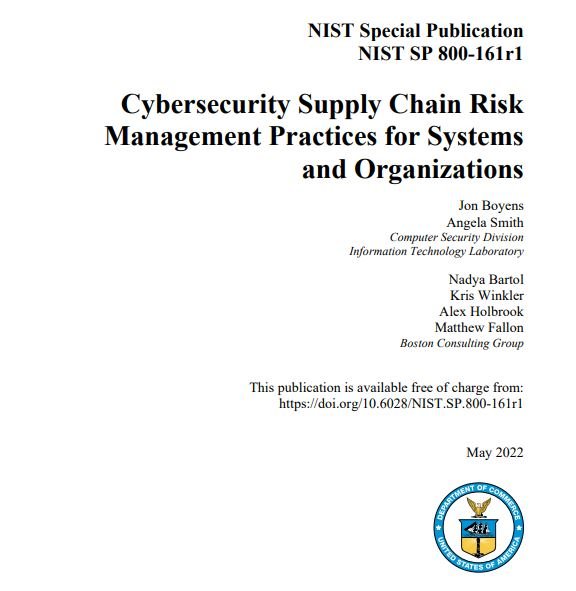The U.S. National Institute of Standards and Technology (NIST) has revised the Cybersecurity Supply Chain Risk Management Guidance (C-SCRM), developed at the request of President Joe Biden to provide advice for the identification, assessment and control of cybersecurity risks throughout the supply chain.
The document, titled “Cybersecurity Supply Chain Risk Management Practices for Systems and Organizations”, invites buyers and end users of digital hardware, software, and services to conduct due diligence on the origin and security of components of a digital/technology product.

Supply chain attacks have become one of the most dangerous hacking variants, as they allow threat actors to compromise multiple devices at once, in addition to exploiting vulnerabilities in widely used components. Just remember the SolarWinds attack, which impacted thousands of organizations worldwide.
For Ilkka Turunen, software supply chain security specialist at Sonatype, these measures are important to substantially improve the security of organizations: “This document outlines fundamental best practices, such as generating software bills of materials (SBOM), as well as describing the maintenance activities necessary to maintain effective security practices in the supply chain.”
The researcher adds that software risk mitigation begins with understanding how the use of managed and unmanaged software occurs in an organization, in addition to the progressive mitigation of those risks at the vendor level and with the constant participation of customers.
On the other hand, Cequence Security experts recently alerted the cybersecurity community about the persistence of attacks exploiting flaws such as Log4Shell, discovered a few months ago and that allows abusing the Apache Log4j login utility, considered omnipresent.
A new wave of attacks, identified as LoNg4j, demonstrates the interaction between modern enterprise IT infrastructure and the digital supply chain, spreading across all kinds of applications and creating a critical attack vector in case any vulnerability is exploited.
To learn more about information security risks, malware variants, vulnerabilities and information technologies, feel free to access the International Institute of Cyber Security (IICS) websites.

He is a well-known expert in mobile security and malware analysis. He studied Computer Science at NYU and started working as a cyber security analyst in 2003. He is actively working as an anti-malware expert. He also worked for security companies like Kaspersky Lab. His everyday job includes researching about new malware and cyber security incidents. Also he has deep level of knowledge in mobile security and mobile vulnerabilities.











